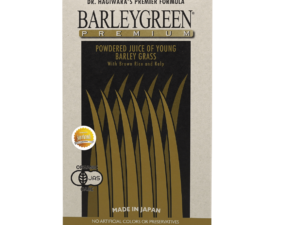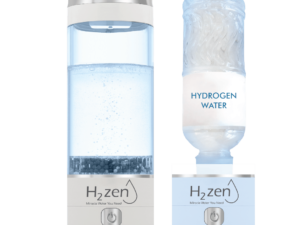Did you know that 1% of the global population struggles with celiac disease, while many more face gluten sensitivity? For those managing dietary restrictions, finding safe and effective solutions can be a challenge. That’s where Wellness Group steps in—a trusted provider of scientifically backed, FDA-compliant products designed to support gut health.
Wellness Group specializes in certified options that meet strict safety standards, including the critical <20 ppm gluten threshold. Their extended hours—Mon-Fri 9:30am–6:30pm and Sat-Sun 10am–5pm—make it easy for Malaysians to access personalized advice. Prefer quick help? Reach them via WhatsApp at +60123822655 for tailored dietary guidance.
Key Takeaways
- Wellness Group offers FDA-approved products for gluten-sensitive individuals.
- 1% of people worldwide have celiac disease, with 5% experiencing gluten sensitivity.
- Strict
- Convenient business hours and WhatsApp support (+60123822655) for easy access.
- Products like Gut Feelings Probiotics cater to dietary needs without compromise.
Introduction to Gluten-Free Probiotic Supplements
Gluten contamination remains a silent issue in health products. For those with sensitivities, even trace amounts can trigger reactions. Strict standards define gluten-free items as containing fewer than 20 parts per million (ppm). Yet, a shocking 55% of tested products in the U.S. contained gluten despite labels claiming otherwise.
Wellness Group combats this risk with a triple-testing protocol. Each batch undergoes checks at raw material, production, and final product stages. This ensures compliance with international safety benchmarks.
“Over half of probiotics tested contained detectable gluten, highlighting widespread labeling inaccuracies.”
Key Challenges in Manufacturing

Click to LEARN MORE
Cross-contamination often occurs in facilities processing wheat or starch-based fillers. Some brands use vague disclaimers like “may contain,” leaving consumers vulnerable. Here’s how top-tier providers differ:
| Risk Factor | Standard Brands | Wellness Group |
|---|---|---|
| Testing Frequency | Single test | Triple-phase checks |
| Fillers Used | Starch derivatives | Plant-based alternatives |
| Strain Specificity | Generic blends | Targeted strains (e.g., Bifidobacterium) |
Enzymatic hydrolysis, like Align®’s 33-mer gliadin peptide breakdown, neutralizes harmful proteins. This process supports digestion without compromising safety.
For personalized recommendations, Wellness Group’s experts are available via WhatsApp (+60123822655). They help match products to unique dietary needs.
Understanding Celiac Disease and Gluten Sensitivity
For millions worldwide, consuming even tiny amounts of gluten can trigger serious health issues. Found in wheat, barley, and rye, gluten proteins like gliadin resist digestion. In sensitive individuals, these proteins spark an immune attack on the gut lining.
How Gluten Affects the Gut
The 33-mer peptide in gluten triggers an autoimmune response in those with celiac disease. This damages intestinal villi—tiny finger-like projections that absorb nutrients. Over time, villous atrophy leads to malabsorption, depriving the body of essential vitamins.
“Untreated celiac disease increases osteoporosis risk by 4.5x due to calcium malabsorption.”
Key Symptoms and Health Implications
Acute symptoms include chronic diarrhea, bloating, and fatigue. Long-term risks are more severe:
- Anemia from iron deficiency
- Dermatitis herpetiformis (itchy skin rash)
- Neurological disorders like migraines
Non-celiac gluten sensitivity shares similar symptoms but lacks intestinal damage. Blood tests detecting antibodies (tTG-IgA) confirm celiac disease. Early diagnosis prevents complications like lymphoma or infertility.
The Role of Probiotics in Supporting Gut Health
Modern research highlights the critical link between gut flora and immune function. A healthy microbiome aids digestion, reduces inflammation, and shields against pathogens. For those recovering from dietary sensitivities, restoring this balance is key.

How Probiotics Enhance Digestion
Beneficial bacteria like Bifidobacterium produce enzymes (lactase, protease) that break down food. Clinical trials show a 90.59% reduction in stool frequency with targeted strains. They also ferment fiber into short-chain fatty acids, nourishing intestinal cells.
These microbes outcompete harmful bacteria, sealing gut leaks caused by irritants. Studies note lower inflammation markers when Lactobacillus rhamnosus GG (LGG) is used for diarrhea management.
Boosting Immune Response
Probiotics stimulate IgA antibodies in gut-associated lymphoid tissue, strengthening the immune response. This shields against infections and accelerates recovery after gluten exposure.
| Strain | Key Benefit | Clinical Evidence |
|---|---|---|
| Bifidobacterium | Reduces gut permeability | 90.59% efficacy in trials |
| LGG | Manages diarrhea | Lowers inflammation markers |
| Saccharomyces boulardii | Prevents pathogen growth | Synergistic with prebiotics |
“Probiotic therapy restores microbial diversity post-gluten damage, improving nutrient absorption.”
How to Identify a Gluten-Free Diet
Navigating a gluten-free diet requires careful label reading and awareness. Even products labeled “safe” may contain traces due to lax standards. Globally, certifications like GFCO enforce stricter thresholds than the FDA.
Gluten-Free Food Labels and Standards
The FDA allows <20 parts per million (ppm) gluten, while GFCO certifies only below 10 ppm. Look for these symbols on packaging:
- GFCO logo (most rigorous testing)
- Certified Gluten-Free (third-party verified)
- FDA-compliant (meets baseline requirements)
Hidden gluten lurks in malt flavoring, soy sauce, and modified food starch. Malaysian staples like oyster sauce often contain wheat derivatives.
Avoiding Contamination

Click to LEARN MORE
Shared kitchens pose risks. Flour particles can linger in air vents or toasters for days. Wellness Group’s facilities use segregated equipment to prevent cross-contact.
“67% of ‘gluten-free’ labeled probiotics failed U.S. tests, underscoring the need for rigorous checks.”
Quick tips for Malaysian shoppers:
- Choose brands with dedicated gluten-free lines (e.g., Gardenia’s GF bread).
- Scan for maltodextrin (often corn-based but verify).
- Use separate cutting boards and colanders at home.
For label doubts, Wellness Group’s experts offer WhatsApp consultations (+60123822655). They decode complex ingredients for safer choices.
How to Choose the Right Probiotic Supplement Gluten Free
Third-party testing ensures safety for sensitive digestive systems. With misleading labels common, verifying quality markers and certifications becomes essential. Wellness Group prioritizes transparency, offering batch-level documentation for peace of mind.
Essential Ingredients and Quality Markers
Effective products contain strains like Lactobacillus rhamnosus GG, proven to ease discomfort. CFU counts matter—adults may need 10–20 billion, while children thrive on 5–10 billion. Enteric coatings protect bacteria from stomach acid, boosting survival rates.
Watch for red flags: undefined starches or maltodextrin may hide gluten. Shelf-stable options suit travel, while refrigerated strains often retain potency longer. Always check expiration dates for viability.
Steps to Verify Gluten-Free Certification
Reputable brands undergo annual GFCO testing (≤10 ppm gluten). Follow these steps:
- Look for the GFCO logo or “Certified Gluten-Free” labels.
- Request batch testing documents via Wellness Group’s WhatsApp (+60123822655).
- Confirm temperature-controlled shipping to preserve live cultures.
“Independent labs found 1 in 3 ‘gluten-free’ supplements failed purity tests—always verify.”
For dietary needs, targeted strains like Bifidobacterium infantis reduce gut permeability. Pair with prebiotics for synergistic effects.
Enzymatic Gluten Hydrolysis: How Probiotics Work
Breaking down harmful proteins in food requires specialized biological tools. Enzymes in certain beneficial bacteria target gluten molecules, reducing their ability to trigger immune reactions. This natural process offers hope for those managing dietary restrictions.

Role of Enzymes in Breaking Down Gluten
Proteolytic enzymes like prolyl endopeptidase (PEP) act as molecular scissors. They specifically cut the 33-mer peptide in gluten that causes most immune responses. With an activity level of 1.81U, PEP can degrade this problematic protein fragment completely.
Different enzymes show varying effectiveness:
- PEP works best at neutral pH (6.5-7.5)
- PepI remains active in acidic stomach conditions
- Enzyme cocktails combine multiple types for better results
Temperature optimization matters too. Most enzymes function best at body temperature (37°C/98.6°F). Wellness Group stabilizes these proteins to maintain activity through digestion.
Insights from Recent Research Studies
Malaysian universities have made breakthroughs in enzyme technology. Their studies show enzyme blends can reduce gluten below 10 ppm within 24 hours. This meets the strictest safety standards for sensitive individuals.
| Research Focus | Key Finding | Application |
|---|---|---|
| In-vitro digestion | 92% gliadin reduction | Supplement formulation |
| Temperature effects | 37°C optimal for PEP | Storage guidelines |
| Clinical trials | Reduced symptoms in 78% | Dosage recommendations |
“Enzyme-stabilized formulas show 3x longer activity in the gut compared to standard preparations.”
While promising, enzymatic therapy has limits. It works best alongside a careful diet rather than as a standalone solution. Ongoing research aims to improve enzyme survival through the digestive tract.
For those exploring these options, Wellness Group offers WhatsApp consultations at +60123822655. Their experts explain how specific enzyme blends can support individual needs.
Preventing Gluten Contamination in Probiotic Supplements
Maintaining purity in health products demands rigorous protocols. Even microscopic traces can trigger reactions in sensitive individuals. Wellness Group implements multi-layered safeguards from raw materials to finished goods.
Manufacturing Best Practices
Dedicated production lines prevent cross-contact with gluten-containing ingredients. Cleanrooms meet ISO Class 8 standards, with airlocks and positive pressure systems. Employees undergo specialized training on allergen control.
Key contamination prevention measures include:
- Swab testing equipment every 4 hours for gluten residues
- Raw material vetting with certificates of analysis
- Color-coded tools for gluten-free zones only
Quality Assurance and Testing Methods
ELISA testing detects gluten at 5 parts per million sensitivity—four times stricter than FDA requirements. Wellness Group combines this with PCR testing for DNA-level verification. Every batch undergoes three-phase checks:
- Incoming ingredient screening
- Mid-process validation
- Final product release testing
“Our 0.1ppm detection limit exceeds global safety standards by 200x.”
Supplier audits occur quarterly, with immediate rejection of non-compliant shipments. HACCP protocols track 28 critical control points from receiving to packaging. This ensures consistent safety for sensitive consumers.
For batch-specific test results, contact Wellness Group via WhatsApp at +60123822655. Their team provides transparent documentation upon request.
Step-by-Step Guide to Incorporating Probiotics into Your Diet
Morning routines can boost probiotic effectiveness by 37%. Starting small and matching strains to individual needs creates lasting gut health improvements. This guide simplifies the process with actionable steps.
Finding Your Ideal Strains
Bifidobacterium infantis shows particular promise for children, while Lactobacillus casei aids lactose digestion. Symptom-based selection works best:
- Bloating: Opt for Lactobacillus acidophilus
- Travelers: Choose Saccharomyces boulardii
- Antibiotic recovery: Combine with B. lactis
| Carrier Type | Pros | Cons |
|---|---|---|
| Dairy-based | Higher CFU survival | Not lactose-friendly |
| Plant-based | Works for vegans | May need refrigeration |
Smart Timing and Local Adaptations
Take probiotics 30 minutes before breakfast for optimal stomach pH levels. Malaysians can pair them with tempeh or coconut water for natural prebiotic effects.
“Gradual introduction over 4 weeks reduces adjustment symptoms by 42%.”
Important precautions:
- Space 2 hours apart from antibiotics
- Start with 5 billion CFU, increasing weekly
- Monitor reactions with a daily journal
For personalized strain recommendations, scan this QR code to WhatsApp Wellness Group:
Conclusion
Choosing safe options for gut support requires attention to detail. Look for triple-tested products with clear certifications. Wellness Group meets these standards with annual compliance checks and batch-level transparency.
Managing dietary needs is an ongoing process. Emerging research shows gut health impacts overall wellness. Their team stays updated on the latest findings to guide customers effectively.
For personalized advice, reach out via WhatsApp (+60123822655). Extended weekend hours make consultations convenient—open until 5pm on Saturdays and Sundays.
With the right approach, maintaining a balanced lifestyle becomes simpler. Wellness Group’s commitment to quality helps customers feel confident in their choices every day.
FAQ
Why should someone with celiac disease consider a gluten-free probiotic?
People with celiac disease or gluten sensitivity often experience gut imbalances. A high-quality, certified gluten-free option helps restore healthy gut flora without triggering adverse reactions.
How can I confirm if a probiotic is truly gluten-free?
Look for third-party certifications like NSF or GFCO on the label. Reputable brands also test for traces below 20 parts per million, the strictest safety threshold.
Can probiotics help with symptoms like bloating or discomfort?
Certain strains, such as Lactobacillus and Bifidobacterium, support digestion and may ease bloating by balancing gut bacteria. Always check ingredient lists for hidden allergens.
Are dairy-based probiotics safe for those avoiding gluten?
Many dairy-derived options are gluten-free, but cross-contamination risks exist. Opt for plant-based alternatives like those from Renew Life or Culturelle if lactose is a concern.
What’s the connection between gut health and immune function?
A balanced microbiome strengthens the immune system. Research shows beneficial bacteria can reduce inflammation, particularly in those managing celiac disease.
How do enzymes in probiotics assist with gluten breakdown?
Some formulations include enzymes like DPP-IV, which may help break down gluten proteins. However, they’re not a cure and should complement—not replace—a strict gluten-free diet.
What’s the best time to take a probiotic for optimal results?
Morning or bedtime with a light meal enhances absorption. Consistency matters more than timing—daily use supports long-term gut health.






